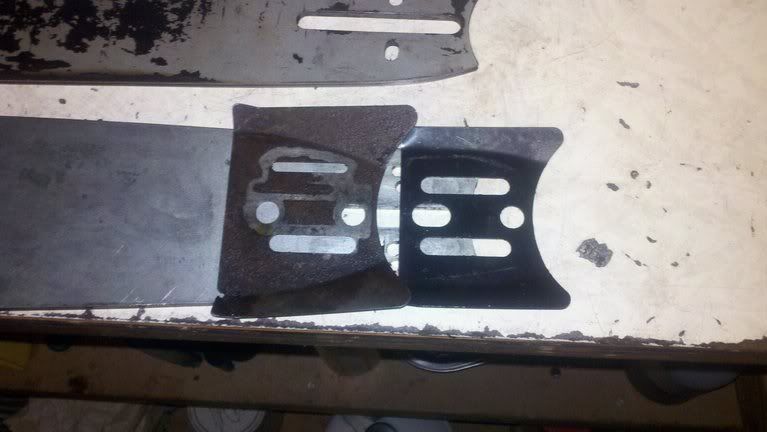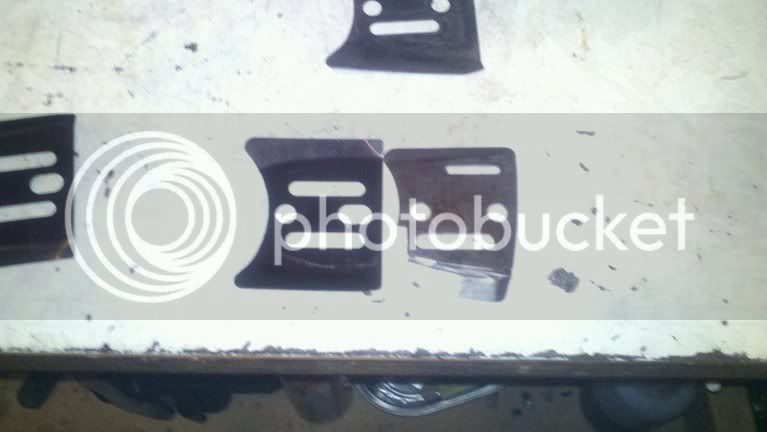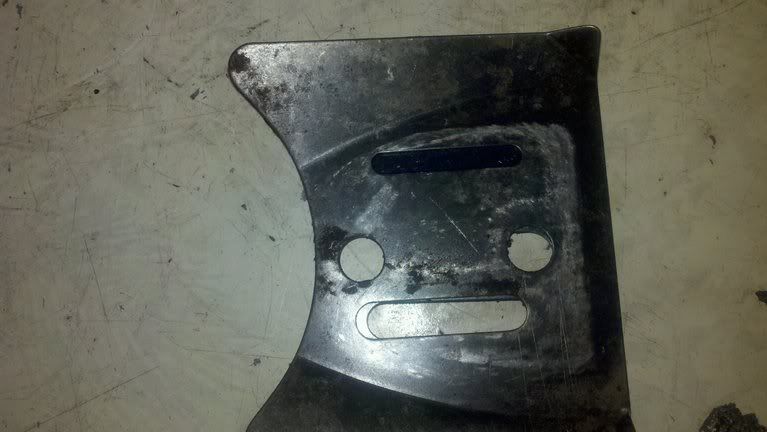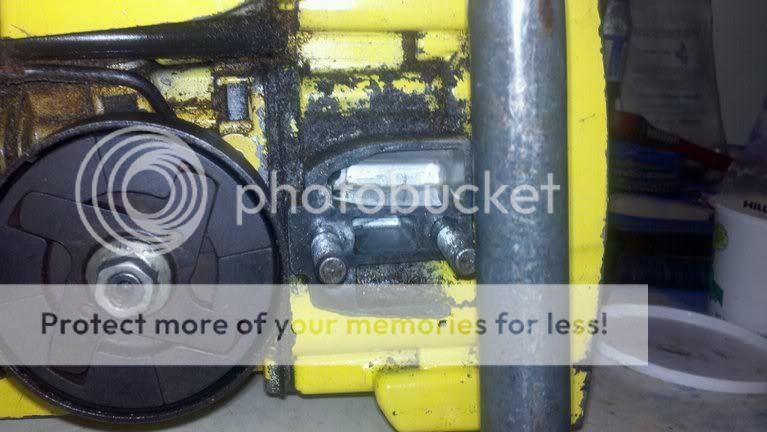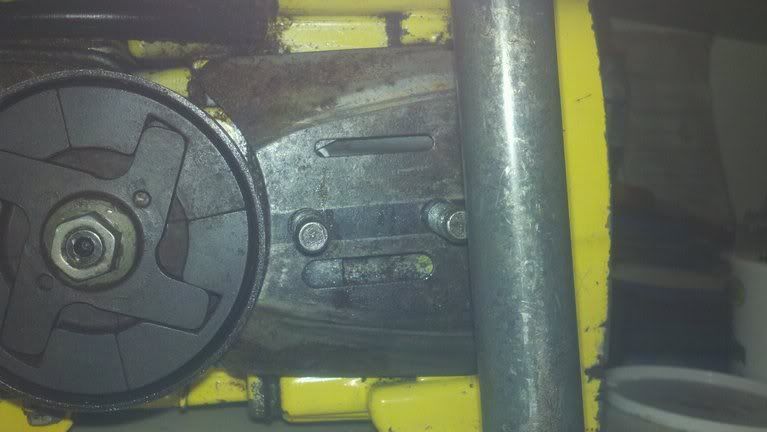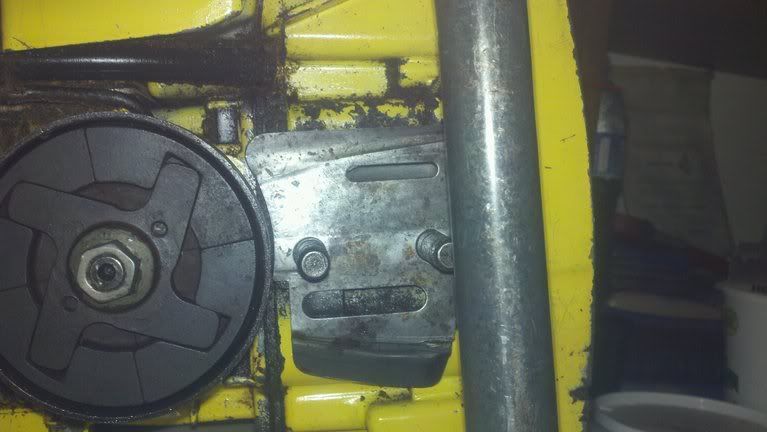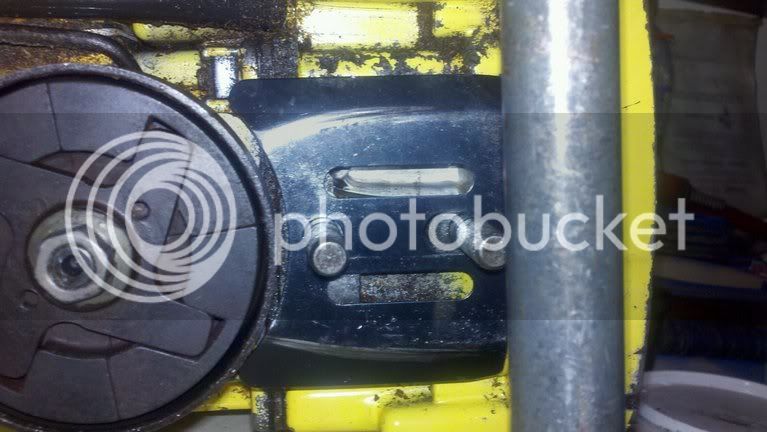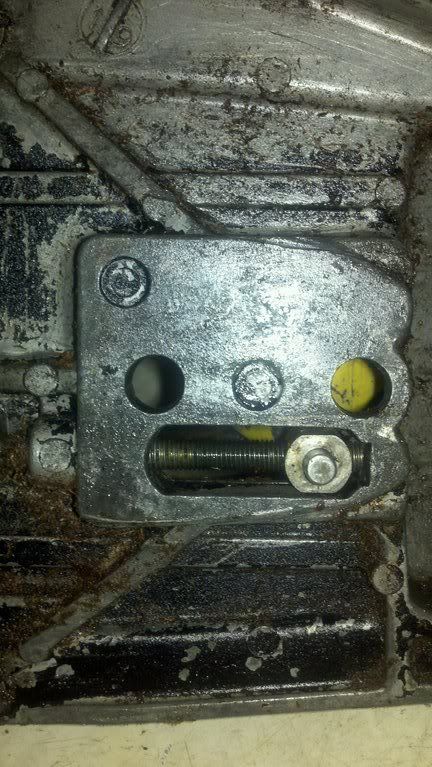Large Frame McCulloch Bar Plate and Bar Mount Pattern Issues Part-1
While switching bars on my 650 gear drive a while ago, I discovered some issues with large frame McCulloch bar oiler holes/slots and bar plates that I've never seen discussed. Mark H and the other McWizards probably knew it all already, but I sure didn't. It all boils down to putting your inner bar plate against your bar to make SURE the oil holes and passages line up. There are some cases (with certain bar tail and bar plate combinations) where things won't line up, and the chain will get no oil.
McCulloch (and Oregon) used/produced two different styles of bar plates for the large frame McCulloch saws (from the D-30 forward, as I understand it). At least three different bar tail oiler hole/slot designs for these saws were manufactured for use on these saws over the decades. Use certain early large frame McCulloch bars on a saw equipped with the later style inner bar plates (with two large symmetrical slots), and your chain gets NO oil.
Use a late style bar that looks like an enlarged 10-series bar mount, (no oiler holes, other than the elongated adjuster holes that also feed oil to the rails) with certain early style McCulloch and Oregon bar plates, and your chain also will get no oil. First I'll cover the bar plates, then I'll cover the bar tail oiler hole/slot placement differences and the problems that arise when the wrong combination is used.
The late style bar plate looks like an enlarged 10-series bar plate. Inner and outer plates are identical, with two large slots equally spaced, close to the centerline. The early style inner bar plates are not symmetrical. The early style plates have an inner and an outer (that can't be switched). The lower adjuster pin slot is large (and in the same location as the lower slot on the late plates), while the upper (oil) slot is thin, but farther from centerline and moved forward in comparison to the lower slot.
Late style inner bar plate on the left. Early style McCulloch inner bar plate on the right. Notice the narrower, higher placed oiler slot on the early plate. You can also see that the early plate oiler slot lines up with the outer hole on the bar tail of this early style bar. The late style plate oiler slot lines up with the inner, adjustment pin hole in this bar (and NOT the oiler hole).
Here's the late style plate on the left, with the early style Oregon plate on the right. The oiler slot size and placement differences are easy to see here.
This is an early McCulloch inner plate placed over a late style plate. Notice that the adjuster slots line up, while the oiler slots do not.
The oiler well cast into the bar mount pad on the large frame McCulloch chainsaws didn't substantially change over the years. It is large, and accomidates both the early and late style inner bar plates. A fellow can run a saw witout an inner bar plate and it'll oil all the various large frame Mac bar styles.
Here's the bar pad, showing the oiler well. This happens to be a front tank Mac (a 550), but the pad/well design is basically the same for the top tank Mac large frame saws as well.
Here's a pic of the early style McCulloch bar plate on this saw.
Here's an early style Oregon bar plate on the same saw. The profile of the Oregon plate differs from the Mac plate, but the oiler slot placement is roughly the same.
Here's the late style McCulloch bar plate on the saw. It's basically an enlarged 10-series bar plate.
This is the back side of the clutch cover for this saw. You can see that the area above the bar stud section is large and flat. This allows the cover to seal off the oiler slot on the 'off side' of the bars (and on the outer bar plates), no matter which style they are. This clutch cover has the style of bar tensioner that was used for most of the large frame Macs of the 1960's and 1970's. The earliest saws (such as the D-30, D-36, and D-44) instead had a large tensioner screw in the bar pad portion of the fuel or oil tank (depending on whether it was a front tank or top tank saw). This large screw had a VERY large head that fit into a 'thumbnail' slot cut into the bar (which you'll see in a few of my bar pics). This tensioner style difference has nothing to do with the oiler hole/slot changes in bar plates or bar patterns.





 Good to hear from ya.
Good to hear from ya. the 1-63 i have not ran yet but it's a clean low hour saw . many saws a head of that one. but that can change at any moment.
the 1-63 i have not ran yet but it's a clean low hour saw . many saws a head of that one. but that can change at any moment.